Two Knights, One Horse − How A Legendary Knights Templar Symbol Has Puzzled And Fascinated Since The Middle Ages
AncientPages.com - The Knights Templar, a legendary monastic military order forged in the fires of the Crusades, continue to enthrall 21st-century audiences.
Did this seal symbolize the order’s poverty, homosexuality or companionship with Christ? Hinterkappelen/Wikimedia Commons, CC BY-SA
From the time of their founding in 1119 C.E. to their dissolution in 1312 C.E., the Templars’ mission was to defend Christian kingdoms in the Holy Land against the various Muslim powers that sought to return the region to Islamic rule. In service of this mission, the order fused two defining institutions of the early Middle Ages: the mounted knight and the pious monk.
At the time, this made the Templars something of a puzzle. How could someone be both a pious monk and a ferocious warrior? The Templars themselves tried to address this question in their symbology, which proved as puzzling as the order itself.
One of the Templars’ more enigmatic symbols was their wax seal – two knights riding a single horse. In the Middle Ages, people used seals to protect important communications from forgery, acting like a signature. Everyone from individuals to organizations had their own unique seal.
While the images on seals could be relatively simple and straightforward, they sometimes conveyed more subtle messages. The message of the Templars’ seal has always been open to interpretation.
Interpreting the Templar seal
While researching medieval geopolitics and the Third Crusade, I came across several interpretations of the Templar seal.
The most popular ties the shared steed to the Templars’ vow of poverty. While the Order was not literally financially constrained, the symbol likely was meant to demonstrate that the Templars took the vow seriously.
The Knights Templar were a military order of monks. From the archive of the British Library via Flickr, CC BY
Another draws a connection to the Gospel of Matthew, where one figure represents a knight and the other Jesus Christ. This interpretation stems from a Bible passage where Christ says, “For where two or three are gathered in my name, there am I with them.” The idea is that the two knights on a single horse embody the ever-present companionship of Christ with the Templars who had gathered in his name.
As part of a campaign to discredit the Templars, some suggested the two knights symbolized the homosexuality said to be rampant within the order.
Some propose that the two knights represent a duality within the order itself. The single horse could signify the unification of their seemingly contrasting roles as warrior-monk.
Constantine is said to have had a divine vision while preparing for battle. School of Raphael/Wikimedia Commons
The seal’s inscription adds another layer of intrigue. Originally, the inscription read “Sigillum Militum Christi” – Latin for “Seal of the Soldiers of Christ.” In the mid-13th century, the order’s 19th grand master changed the inscription to “Sigillum Militum Xpisti,” replacing the Latin word for Christ with the Greek. Some scholars argue that using the Greek letters “XP” instead of the Latin “CHR” was intended to invoke Emperor Constantine’s vision at the Battle of the Milvian Bridge in 312 C.E. His victory allowed him to end the official persecution of Christians in the Roman Empire.
Multiple meanings
While the exact meaning of the seal remains a riddle, there is little doubt it served as a powerful symbol of the knights’ commitment to their ideals.
The seal’s many interpretations resonate with different audiences. For some, it represents Christian soldiery and unwavering brotherhood. For others, it evokes the enigmatic nature of the Templars. And for others, it suggests corruption and sexual misconduct.
The seal serves as a window into the Knights Templar’s identity and impact on medieval Christian history. It is a symbol likely to continue to spark curiosity for centuries to come.
Provided by The Conversation
This article is republished from The Conversation under a Creative Commons license. Read the original article.
More From Ancient Pages
-
 Archaeologists uncover new Yup’ik artifacts near Quinhagak, Southwest Alaska
Artifacts | Aug 28, 2015
Archaeologists uncover new Yup’ik artifacts near Quinhagak, Southwest Alaska
Artifacts | Aug 28, 2015 -
 Vodyanoi: Evil Water Spirit In Ancient Beliefs Of The Slavs
Featured Stories | May 23, 2019
Vodyanoi: Evil Water Spirit In Ancient Beliefs Of The Slavs
Featured Stories | May 23, 2019 -
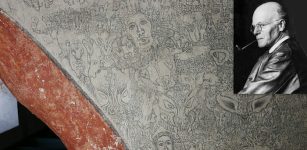 Mystery Of The Demon Wall In Sauherad Church Finally Solved
Archaeology | Dec 15, 2021
Mystery Of The Demon Wall In Sauherad Church Finally Solved
Archaeology | Dec 15, 2021 -
 Early Humans Were Probably Driven To Extinction By Climate Change- Study Suggests
Civilizations | Oct 15, 2020
Early Humans Were Probably Driven To Extinction By Climate Change- Study Suggests
Civilizations | Oct 15, 2020 -
 Ancient Giant Amphibians Swam Like Crocodiles 250 Million Years Ago – New Study
Archaeology | Mar 31, 2023
Ancient Giant Amphibians Swam Like Crocodiles 250 Million Years Ago – New Study
Archaeology | Mar 31, 2023 -
 Highly Debated Early Homo Erectus Skull From Turkana – Age And Origin Now Verified
Archaeology | Apr 20, 2021
Highly Debated Early Homo Erectus Skull From Turkana – Age And Origin Now Verified
Archaeology | Apr 20, 2021 -
 Runic Inscription On The Forsa Ring Is Not What We First Thought – Scientists Say
Archaeology | Aug 15, 2024
Runic Inscription On The Forsa Ring Is Not What We First Thought – Scientists Say
Archaeology | Aug 15, 2024 -
 Prehistoric Humans Recycled Old Stone Tools To Preserve The Memory Of Their Ancestors
Archaeology | Mar 17, 2022
Prehistoric Humans Recycled Old Stone Tools To Preserve The Memory Of Their Ancestors
Archaeology | Mar 17, 2022 -
 4000-Year-Old Egyptian Leather Manuscript Forgotten For More Than 70 Years – Found
News | Sep 14, 2015
4000-Year-Old Egyptian Leather Manuscript Forgotten For More Than 70 Years – Found
News | Sep 14, 2015 -
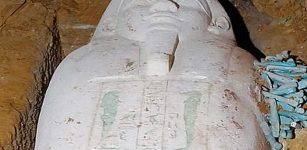 Limestone Sarcophagus, Ushabti Figures Unearthed In Minya’s Al-Gharafa Area, Egypt
Archaeology | Oct 3, 2020
Limestone Sarcophagus, Ushabti Figures Unearthed In Minya’s Al-Gharafa Area, Egypt
Archaeology | Oct 3, 2020 -
 Researchers Find An Elusive European Ancestor Of Lager Yeast In Ireland
Archaeology | Dec 14, 2022
Researchers Find An Elusive European Ancestor Of Lager Yeast In Ireland
Archaeology | Dec 14, 2022 -
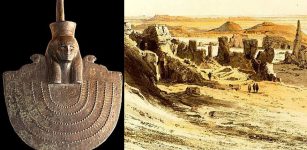 City Of Sais: Prehistoric Prestigious Cult Center Of Northern Egypt
Featured Stories | Oct 31, 2016
City Of Sais: Prehistoric Prestigious Cult Center Of Northern Egypt
Featured Stories | Oct 31, 2016 -
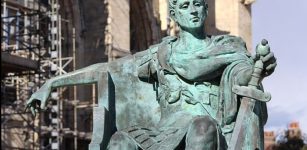 On This Day In History: Emperor Constantine I Passes His Famous National Sunday Law – On March 7, 321 AD
News | Mar 7, 2017
On This Day In History: Emperor Constantine I Passes His Famous National Sunday Law – On March 7, 321 AD
News | Mar 7, 2017 -
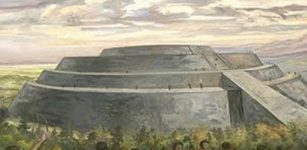 Cuicuilco Circular Pyramid: Ancient Astronomical Observatory And Place Of Power
Civilizations | Aug 24, 2021
Cuicuilco Circular Pyramid: Ancient Astronomical Observatory And Place Of Power
Civilizations | Aug 24, 2021 -
 Baffling Archaeological Find At George Washington’s Mount Vernon
Archaeology | Jun 20, 2024
Baffling Archaeological Find At George Washington’s Mount Vernon
Archaeology | Jun 20, 2024 -
 On This Day In History: Declaration Of Independence Of The Mexican Empire Is Drafted – On Sep 28, 1821
News | Sep 28, 2016
On This Day In History: Declaration Of Independence Of The Mexican Empire Is Drafted – On Sep 28, 1821
News | Sep 28, 2016 -
 Controversial Prehistoric Structures That Resisted Water And Extreme Weather Conditions
Ancient Mysteries | Jun 27, 2018
Controversial Prehistoric Structures That Resisted Water And Extreme Weather Conditions
Ancient Mysteries | Jun 27, 2018 -
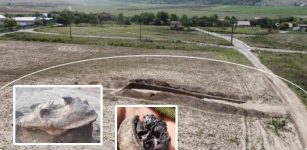 Archaeologists Make An Unusual Find In A 2,000-Year-Old Romanian Burial Mound
Archaeology | Jul 12, 2023
Archaeologists Make An Unusual Find In A 2,000-Year-Old Romanian Burial Mound
Archaeology | Jul 12, 2023 -
 The Faery Grail Of Hospitality And Accord- The Forgotten Story – Part 1
Ancient Mysteries | Sep 25, 2019
The Faery Grail Of Hospitality And Accord- The Forgotten Story – Part 1
Ancient Mysteries | Sep 25, 2019 -
 10 Mysterious Ancient Manuscripts With Hidden Secrets
Featured Stories | May 27, 2016
10 Mysterious Ancient Manuscripts With Hidden Secrets
Featured Stories | May 27, 2016



